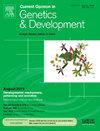Evolution and ecology of commensal gut protists: recent advances
IF 3.6
2区 生物学
Q2 CELL BIOLOGY
引用次数: 0
Abstract
The microbial community colonizing the animal gut includes all domains of life, including eukaryotic microbes. Historically viewed as pathogens, increasing evidence has revealed that many protists are commensal members of the microbiome with diverse ecological functions. This review synthesizes recent advances in our understanding of the ecology and evolution of these organisms, with a focus on phylogenetic diversity, microbial interactions, and genomic signatures of adaptation. New technologies such as single-cell genomics and transcriptomics, long-read sequencing technologies, and co-culture strategies have made these new findings possible, but much remains to be investigated. Further work is needed to understand how these diverse organisms contribute to the gut environment and evolve to colonize animal hosts.
共生肠道原生生物的进化和生态学:最新进展
定植于动物肠道的微生物群落包括生命的所有领域,包括真核微生物。历史上被视为病原体,越来越多的证据表明,许多原生生物是微生物群的共生成员,具有不同的生态功能。这篇综述综合了我们对这些生物的生态学和进化的理解的最新进展,重点是系统发育多样性,微生物相互作用和适应的基因组特征。单细胞基因组学和转录组学、长读测序技术和共培养策略等新技术使这些新发现成为可能,但仍有许多有待研究。需要进一步的工作来了解这些不同的生物如何对肠道环境做出贡献,并进化到定居动物宿主。
本文章由计算机程序翻译,如有差异,请以英文原文为准。
求助全文
约1分钟内获得全文
求助全文
来源期刊
CiteScore
7.90
自引率
0.00%
发文量
102
审稿时长
1 months
期刊介绍:
Current Opinion in Genetics and Development aims to stimulate scientifically grounded, interdisciplinary, multi-scale debate and exchange of ideas. It contains polished, concise and timely reviews and opinions, with particular emphasis on those articles published in the past two years. In addition to describing recent trends, the authors are encouraged to give their subjective opinion of the topics discussed.
In Current Opinion in Genetics and Development we help the reader by providing in a systematic manner:
1. The views of experts on current advances in their field in a clear and readable form.
2. Evaluations of the most interesting papers, annotated by experts, from the great wealth of original publications.[...]
The subject of Genetics and Development is divided into six themed sections, each of which is reviewed once a year:
• Cancer Genomics
• Genome Architecture and Expression
• Molecular and genetic basis of disease
• Developmental mechanisms, patterning and evolution
• Cell reprogramming, regeneration and repair
• Genetics of Human Origin / Evolutionary genetics (alternate years)

 求助内容:
求助内容: 应助结果提醒方式:
应助结果提醒方式:


